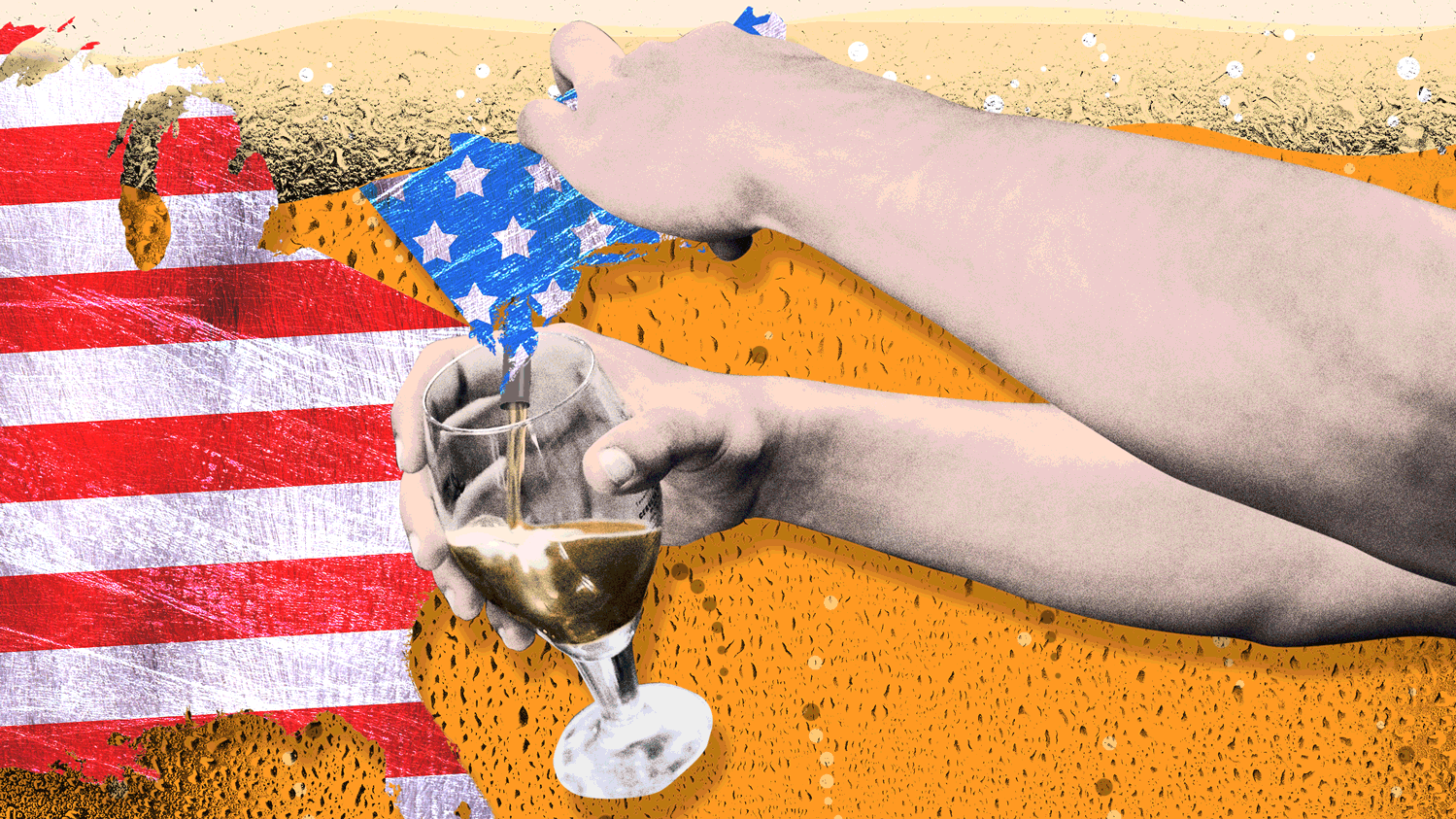Not too long ago, I was out on the coast for a beer event. I flew in early, so I hopped in a van with some friends and drove out into wine country. It was a beautiful day, and the vino was great, but you know how these things are. It got a little hot, and we reverted to type and headed for a nearby brewery.
While we had to travel a distance along a country road, past sprawling farms and ranches, there were already plenty of cars in the parking lot and the place was rocking. The taproom wasn’t more than just a bar, tip jar, some Bluetooth speakers and a ton of t-shirts for sale. There were also picnic tables outside and a food truck peddling hot dogs and ceviche. People were relaxing under a framework sunshade with big glasses of beer while watching their dogs run around the lot. I ordered a glass of an IPA dubbed “Lupulus” (part of the Latin name for hops) and then a barrel-aged strong ale. Life was good.
Funny thing is, I wasn’t in California, the Pacific Northwest or even in the U.S. This prototypical American craft brewery was actually about an hour west of Santiago, Chile, and is named Cerveceria Kross.
I was in Chile to help judge the Copa Cervezas de América, one of the biggest beer competitions in Latin America. It didn’t take more than the first day in-country to realize that the craft beer scene in the region looks a lot like the one in the U.S., including dominant IPAs, wild and sour ales, sharply-hopped pilsners, fruit beers and strong stouts. But this wasn’t a quirk. With increasingly regularity this is what I find in just about every country I now visit. If there aren’t American-style craft breweries in a foreign market, there will very soon be ones.
German-style lager beers may rule the world’s mass market, but America’s craft beer ideas now dominate small breweries as much as Hollywood movies do in the world’s cinemas.
Late last year, I was on a podcast with an English brewer who’s considered cutting edge in the UK, and he brought samples of his, you guessed it, hazy, juicy IPA and his double IPA. While those beers wouldn’t have garnered too much attention in the U.S. in his home market they were downright rebellious. The Scottish sensation BrewDog, which bills itself as a “Craft Beer Company,” has used the American craft beer game plan to turn itself into a major player. It makes dozens and dozens of different beers a year but the one that established the company is Punk IPA. (It’s now coming to the U.S., which will be interesting to see how it’s received.)
Even Germany, which has one of the world’s oldest and respected beer cultures, is not immune America’s influence. Just a few weeks ago, I hosted a tasting of American-style beers—more double IPAs, a session IPA, a fruit sour—made by German “kraft” brewers.
It should come as no surprise that American brewers are now finding jobs across Europe, Asia, and Africa. But they’re not going around the world to learn from locals but to make the same beers they’ve made at home, and they’re a hit.
That’s quite a reversal. When the craft beer movement began in America in the 1970s, there were already lots of small breweries in countries like Germany, Belgium, and the UK. Many of them made great beer, fantastic beer. But they made the traditional beers of their respective lands and cultures: lagers and wheat beers in Germany, a relatively narrow variety of malt-forward ales in the UK, and an eccentric but consistent array of ales in Belgium.
Just as in the U.S., there were some new small brewers that opened in Europe, Scandinavia and Japan. But unlike their American counterparts, they made beer using the national template, perhaps gently tweaked. I remember going to several “house” breweries in the Czech Republic that served a variety of pilsners, some flavored with herbs, some unfiltered. British brewers made porters, pale ales, summer ale, and mild.
American craft brewers on the other hand, impatiently floored it and blew the doors off brewing. (What else would you have expected?) Not only did this approach work but over the past 15 years these upstarts have been able to claim an ever increasing chunk out of the very profitable U.S. beer market. Their wildly different beers—IPAs running on overdrive, “imperial” everything, “session” this and that, big barrel-aged beers, and crazy, hazy New England IPA—have become best-sellers.
The world’s next generation of brewers was intently watching this beer revolution and soon began emulating their American counterparts.
The thirst for American-style beers is so great that San Diego-based Stone Brewing even opened a brewery in Berlin to make its hopped-up Arrogant Bastard. I asked Stone co-founder Greg Koch about dropping super-hoppy beers in Germany, where balance is supposed to be the ideal. He told me a story.
“Last summer I was in the Stone Bistro in Berlin,” he said. “I noticed a German guy, about 75, beelining straight towards me. ‘I understand you are the owner here,’ he said. ‘I have something I want to tell you. Your beer tastes like I used to remember. Thank you!’ He didn’t mean those beers tasted like Stone IPA, they just had more flavor, more character. Many German brewing articles bemoan the loss of quality and flavor profiles.”
But it still troubles me that every time I go to another country I see an array of American-style beers on tap and ever fewer local styles. Is the success of American craft keeping other countries from developing their own palate? Is this some kind of beer imperialism?
Koch vehemently disagrees. “When German light lager styles took over the world, was that beer imperialism? No, it was just one of the best beer styles, new technology, innovation. It’s totally up to people everywhere what beers they prefer. It would be imperialism to say that we should decide what choices people have.”
Then this San Diego beer evangelist laid it on me. “There’s a simple reason why so much of the world likes American craft-style IPA: they’re absolutely delicious. Full stop. That’s it.”
That’s hard to argue with; I love ‘em, too. And as long as American IPA is not the only choice, why would you want to deny it?






